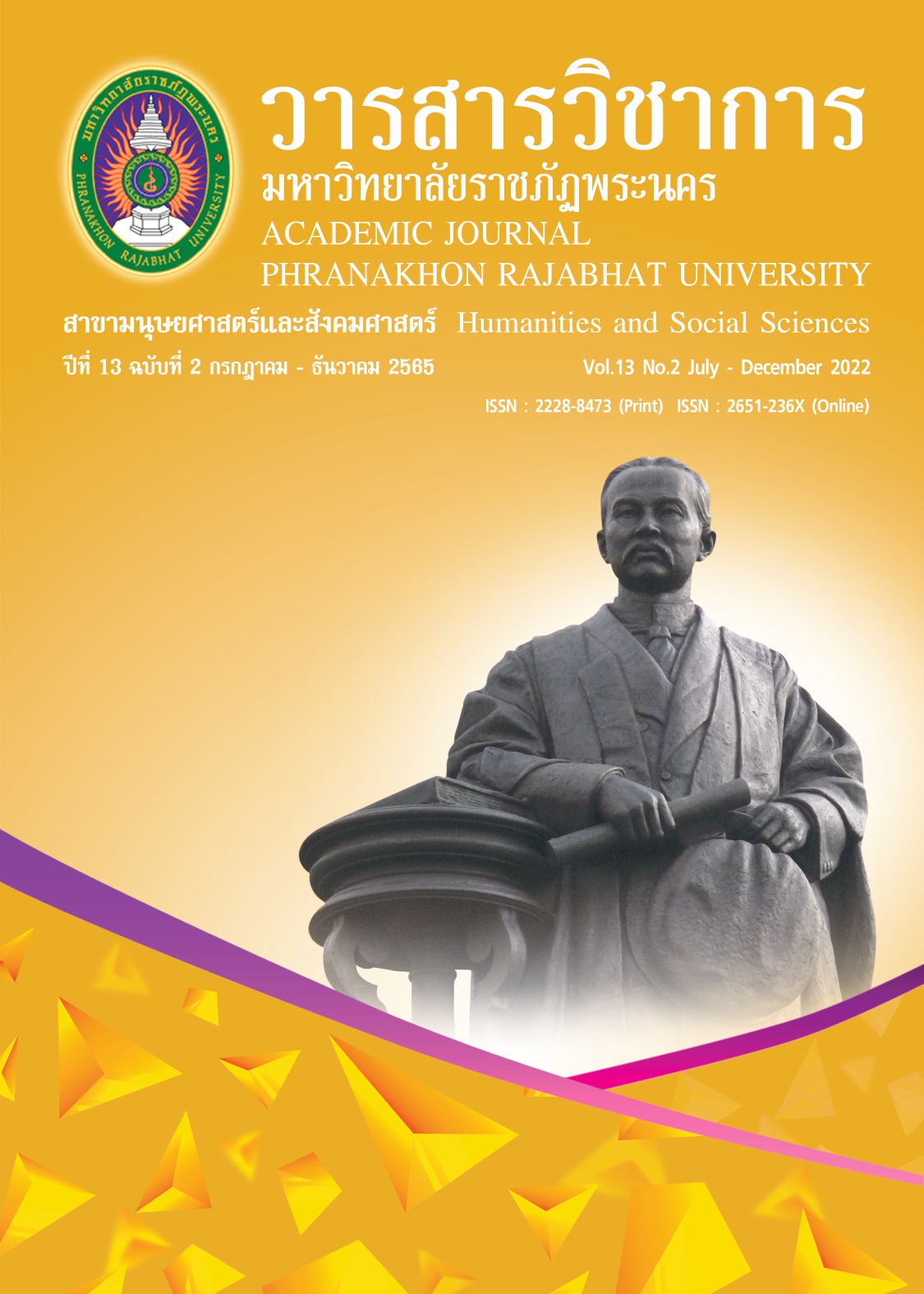THE EFFECTS OF TOTAL PHYSICAL RESPONSE SUPPLEMENTED WITH TEACHING PROPS ON THAI KINDERGARTEN 3 STUDENTS’ CHINESE VOCABULARY KNOWLEDGE AND LEARNING BEHAVIORS
Keywords:
TPR, Teaching props, Chinese vocabulary knowledge, Learning behaviorsAbstract
This article investigated the effects of Total Physical Response (TPR) supplemented with teaching props as the treatment on Thai kindergarten 3 students’ Chinese vocabulary knowledge and learning behaviors at a public school in Nonthaburi, Thailand. Since their Chinese level was in the pre-production stage, one-group experimental design was adopted to test two hypotheses based on arguments that the treatment would provide them with comprehensible input and lower their anxiety. The experiment was conducted face-to-face in the classroom setting for four weeks during January and February 2022 with video recordings for the purpose of interrater reliability. One-Way ANOVA and SPSS version 21 used to analyze the findings from Chinese vocabulary knowledge tests confirmed the first hypothesis that the treatment could positively affect the students’ knowledge, different at the statistical significance level of .041 (P<0.05). The frequency distribution used to count the occurrence of their active learning behaviors from the video records also supported the second hypothesis.
References
Ai, F. (2017). Exploring the disturbance of introverted personality on students' achievement and life. Cathay Teacher, 14, 21.
Asher, J. (2007). TPR: After forty years, still a very good idea. Retrieved from https://www.scribd.com/document/465360823/Asher-2007-TPR-After-forty-years-still-a-very-good-idea [2022, 1 June.]
Bakhromovich, A. D. (2022). Using Total Physical Response For Physical Culture Students. Web of Scientist: International Scientific Research Journal, 3(5), 380-385.
Che, M. M. (2019). A New Style of Teaching Scene to Promote Children’s Deep Learning: Based on the Perspective of Teaching and Learning. Journal of Guizhou Education University, 35(7), 80-84.
Fan, Y. (2021). A study on the application of Total Physical Response in teaching integrated Chinese classes in Thai elementary schools. (Master thesis). XI’AN SHIYOU University, XI’AN, XSYU.
Guan, P. (2012). The Application of the "Affective Filter Hypothesis" in Teaching Chinese as a Foreign Language. Foreign Languages and Literature, 7, 214-216.
Handayani, V., & Amalia, T. Z. (2021). Teaching English for Young Learners by Non-English Teachers in English Course. Britania Journal of English Teaching, 4(2), 63-72.
He, E. N. (2018). The Teaching Exploration of “Acting and Speaking Synchronously” Total Physical Response-Takes Phaiboonvittaya School as an Example. (Master thesis). Guangxi Normal University, Guilin, GXNU.
Krashen, S. (1982). Principles and practice in second language acquisition. Oxford: Pergamon Press.
Liu, F. (2018). Reflections on the TPR Teaching Method in the English Classroom. Education Modernization, 5,(38), 131-135.
Putri, A. R. (2016). Teaching English for Young Learners Using a Total Physical Response (TPR) Method. Edulingua: Jurnal Linguistiks Terapan dan Pendidikan Bahasa Inggris, 3(2), 15-21.
Roduta Roberts, M., & Gotch, C. M. (2019). Development and Examination of a Tool to Assess Score Report Quality. In Frontiers in Education, 4, 20.
Seidenberg, M. S., & MacDonald, M. C. (2018). The Impact of Language Experience on Language and Reading. Topics in Language Disorders, 38(1), 66-83.
Shang, Y. T., & Yang, H. (2014). The Use of Total Physical Response (TPR) Approach in Chinese language teaching to Indonesian Young Children. Journal of South China Normal University (Social Science Edition), 2, 130-135.
Tang, Y. B. (2021). Research on the Use of Theme-based Situational Teaching Model in Early Childhood Education-Themed activities on Guangfu culture as an example. Policy & Scientific Consult, 20, 129-130.
Xiao, Y. J. (2019). The Use of Total Physical Response in Primary Chinese Language Classes in Thai Church Chinese Schools. (Master thesis). Guangxi University, Nanning, GXU.
Xiao, Y., Cao, Z. P., & Peng, W. L. (2020). Interpretation of Children’s Learning Behaviors in Area Games from the Perspective of Schema Theory. Journal of Shaanxi Xueqian Normal University, 36(6), 36-42.
Yuan, L., (2018). Exploration in Class Activities of Chinese Teaching for Thai Children. Journal of Guangxi Science & Technology Normal University, 33(3), 65-72.
Yue, H. (2016). The exploring of the use of Total Physical Response of English teachers in teaching English to kindergarten students. Journal of Ezhou University, 4(23), 72-74.
Zainudin, A. (2018). TPR: The Old but Gold Strategy in Enlarging Young Learners’ Vocabulary. LINGUA: Jurnal Bahasa dan Sastra, 18(2), 119-124.
Zhang, H. W. (2019).The Implementation Dilemma and Response Strategy of Total Physical Response Method. Modern Communication, 18, 184-186.
Downloads
Published
How to Cite
Issue
Section
License
Copyright (c) 2022 Academic Journal Phranakhon Rajabhat University

This work is licensed under a Creative Commons Attribution-NonCommercial-NoDerivatives 4.0 International License.
"บทความวิชาการในวารสารฉบับนี้ ถือเป็นความรับผิดชอบของผู้เขียนเท่านั้น"
สงวนลิขสิทธิ์ตามพระราชบัญญัติลิขสิทธิ์




